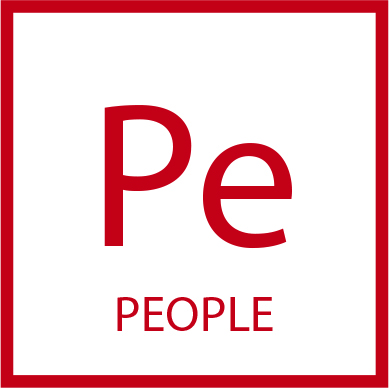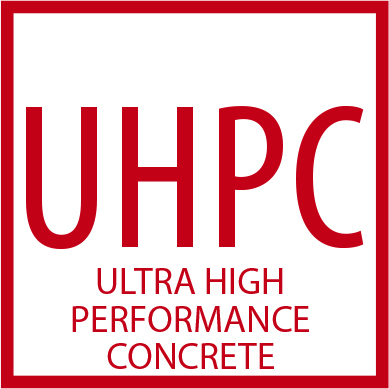Ductal®
Ultra High Performance Concrete
Fine Concrete, LLC is one of a select group of firms in the United States holding a sub-license to design and fabricate with Ductal®, an ULTRA HIGH PERFORMANCE CONCRETE.
This innovative material produces concrete elements that are up to 10 times stronger than conventional concrete. The UHPC possesses unprecedented flexural strength, allowing for finer, thinner, lighter and more elegant designs. The chemistry is cutting edge while still embracing the natural qualities of concrete.
Characteristics of Ductal®
DUCTAL® is fiber-reinforced and has tensile strength, unlike conventional concrete. It achieves this engineering feat by progressively absorbing the energy applied and efficiently dispersing it throughout the matrix. These mechanical properties make it possible to create very slender structures with little or no passive steel reinforcement.
DUCTAL® is self-consolidating with microfine aggregates that make it extremely dense with less porosity, offering resistance to scratching and staining. This super fine design matrix also produces a surface capable of intricate detail with unlimited surface textures, finishes and colors.
DUCTAL® is a sustainable material that uses less energy to manufacture and substantially less water in the fabrication of the elements. There is no off-gassing. Ductal® offers many LEED certification credits.
DUCTAL® owes its innovative character to its exceptional mechanical performance, in particular its resistance to compression and bending, its creep and shrinkage behavior, and its fire-resistance.
Basic Property Comparisons
Performance Specifications
The table below indicates the material’s general performance values which are obtained in the test procedures specified in the UHPC recommendations.
The values above are for guidance only and cannot be used as technical design specifications. They depend on the product characteristics, experimentation method, raw materials, formulas, manufacturing procedures and equipment used; all of which may vary. This data provides no guarantee or commitment that the values will be achieved in any particular application of Ductal®. Ductal® is a registered trademark and may not be used without permission. The ultra-high performance material that is Ductal® and its various components are protected by various patents and may not be used except pursuant to the terms of a license agreement with the patent holder.
Compressive Behavior
Ductal® exhibits excellent performance in compressions: It is 4 to 8 times higher than conventional concretes. Compression behavior is almost linear elastic up to the maximum stress and exhibits no damage to the material during this phase. Stress curve – deformation for a sample of Ductal® with metallic fibers.
The shape of the curve is identical for Ductal® with organic fibers although the peak value is lower.
Shrinkage and Creep
Shrinkage and creep are probably the most remarkable properties of Ductal®. Creep tests have been carried out in France at the Ecole Centrale de Nantes and at the Laboratoire Central des Ponts et Chaussées (LCPC) and in the United States at the Federal Highway Administration (FHWA) Research Center in McLean, Virginia, USA.
For ordinary concrete, the creep coefficient can reach 3-4; for high-performance concrete, this is reduced but the recorded deformation remains higher than the elastic deformation. The creep coefficient of Ductal® is less than 0.8, and if a heat treatment is applied, the creep factor is less than 0.2, as shown in the figure below. As a rule, a value of 0.3 is considered for calculations.
Since the water to cement ratio is very low, Ductal® does not exhibit drying shrinkage. An endogenous shrinkage is observed (300 to 400 μm/m), but when heat treatment is applied, shrinkage is complete by the end of the treatment and there is no subsequent residual shrinkage, as shown in the figure below.
Bending Behavior of Ductal®
Ductal® with metallic fibers contains 2% by volume of metallic fibers, or more than 50 million metallic fibers per cubic meter. The fibers give the material a ductile behavior during bending (i.e., when loaded in flexure behond the elastic limit, micro-cracks occur and the fibers hold the cracks tightly closed, providing a ductile performance rather than a sudden or brittle failure) as shown in the following graph.
The ductility behavior observed during bending is characterized by a multiple cracks before the stress peaks, without localization and without the presence of any major cracks.
Fatigue Behavior
Fatigue tests on pre-loaded test samples were carried out at the CSTB. The loading applied was between 10 and 90% of the elastic limit. The figure below shows a crack opening displacement curve in relation to the number of cycles. Note: There is no increase in the crack opening, i.e. no crack propagation, at 1.2 million cycles.
Analysis of the rate of increase of the deflection in relation to the number of cycles shows that the loading applied is below the material’s threshold of endurance. When calculating the design of structures subjected to fatigue action-effects, the service stress is limited to the material’s resistance to direct tension. The results presented above verify that the application of the UHPC rule is particularly reliable in the case of Ductal® products with metallic fibers.
Behavior Under Fire
Ductal® materials are classed as “M0” (non-flammable). A specific formulation, Ductal®-AF has been developed for improved fire resistance. This formulation uses metallic fibers, to which organic fibers are added. ISO 834 fire-resistance tests on loaded and non-loaded columns and beams have been carried out at the Centre Scientifique et Technique du Bâtiment (CSTB – Marne-La-Vallée) and at VTT in Finland. These tests have demonstrated the material’s excellent resistance and near total absence of spalling. The photo below shows a column before and after the ISO fire test.
Material properties at high temperatures
The characterization of Ductal® at high temperatures was carried out at CSTB in Grenoble, at SFC in France, at the University of Braunschweig in Germany, at the Politecnico di Milano in Italy, and at Imperial College London in the UK. A summary of the results is given below.
Evolution of the resistance under compression according to temperature
Compressive tests at high temperatures were carried out on test samples of Ductal®. Some of the tests were carried out on samples after cooling having been maintained at a given temperature T: so-called ‘residual’ tests. Some of the test samples were tested at the constant temperature T: so-called ‘hot’ tests.The figure below shows all the results. We can see that the results obtained are almost all higher than the “DTU Feu” (French fire safety standard) curve specified for HPCs (extension of the “DTU Feu” for HPCs between 60 and 80 MPa).This standard DTU curve can therefore be used for calculating the fire resistance of structures in Ductal®.
















